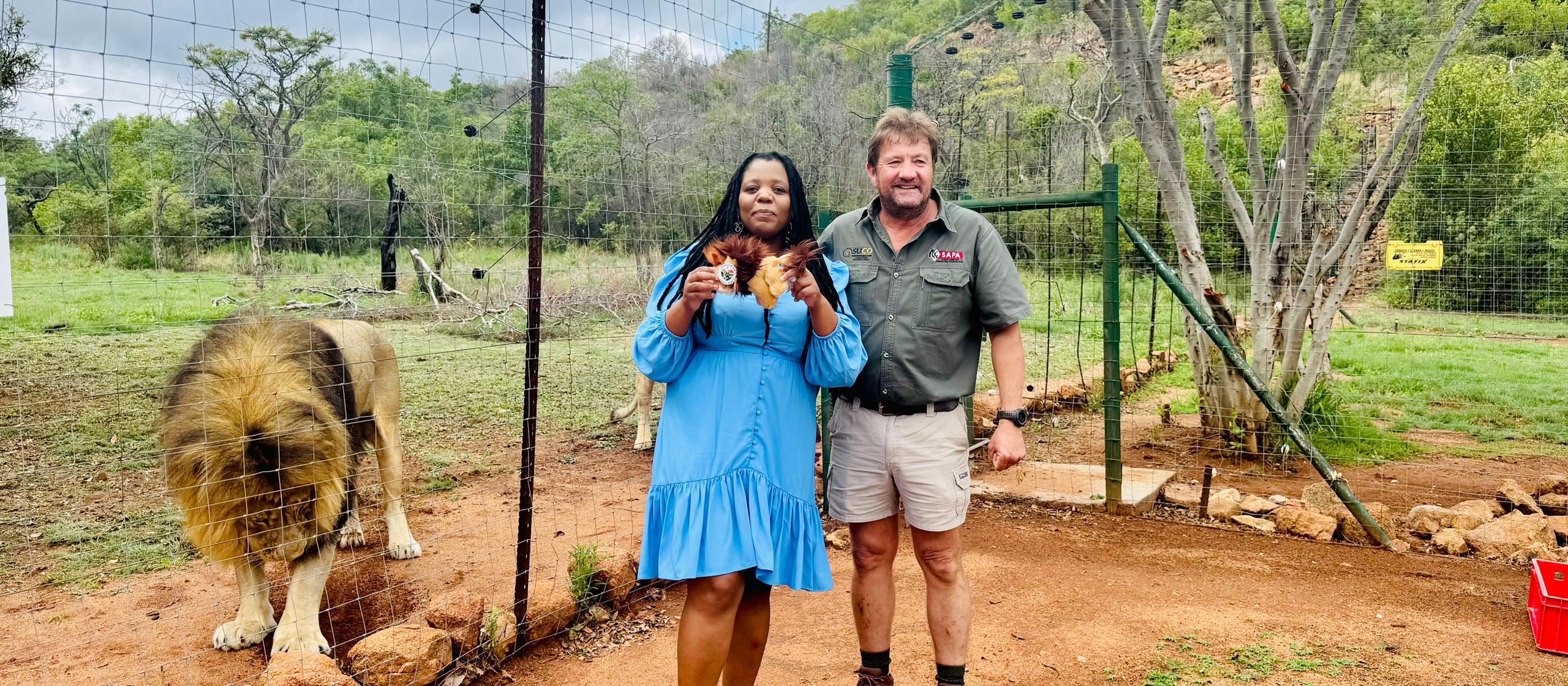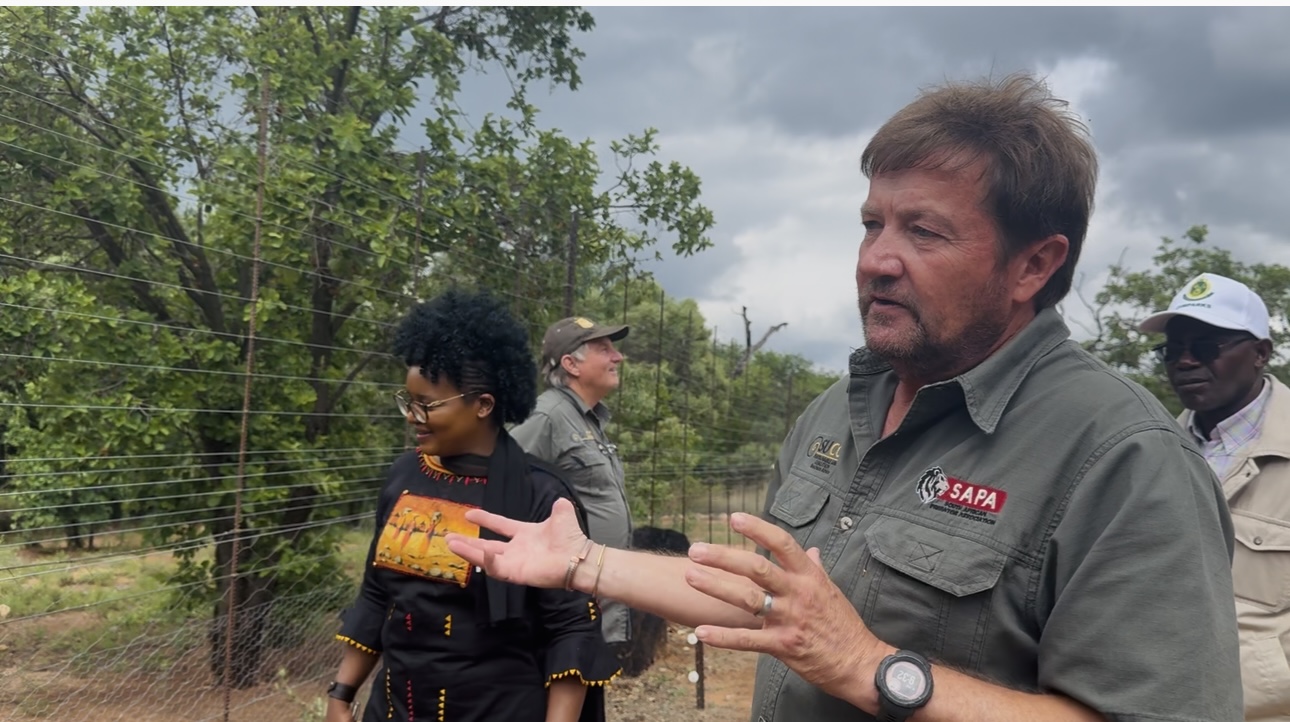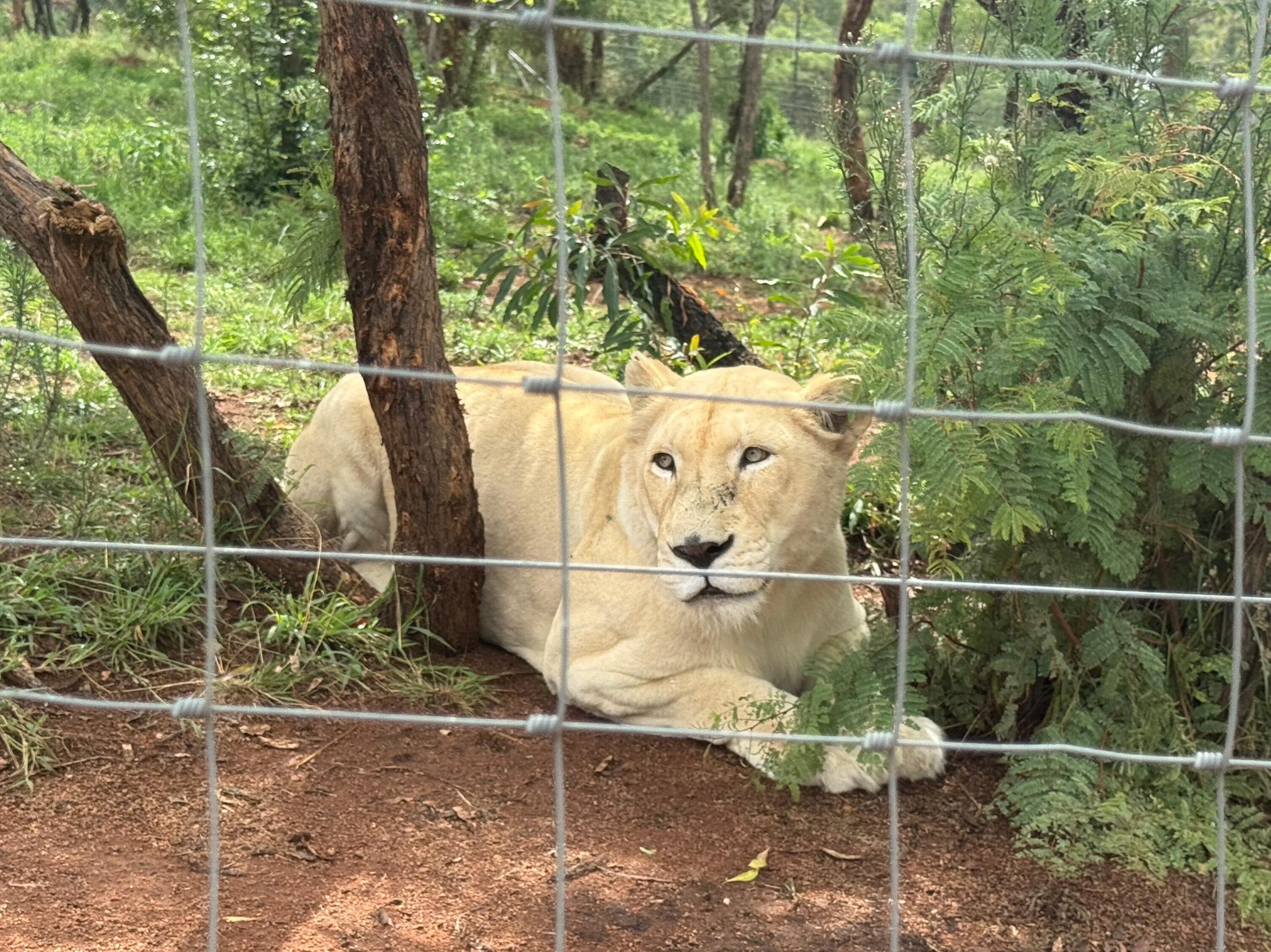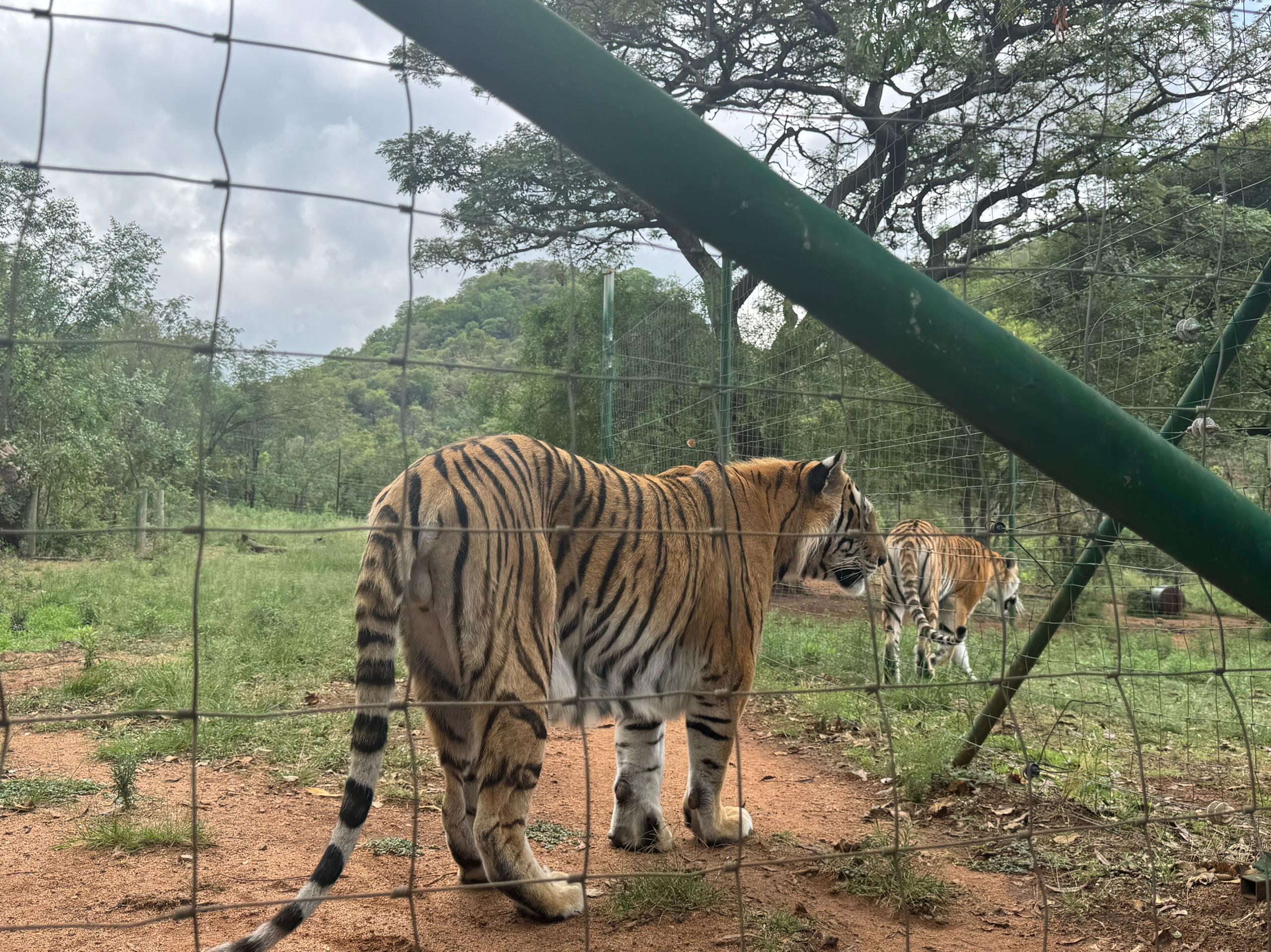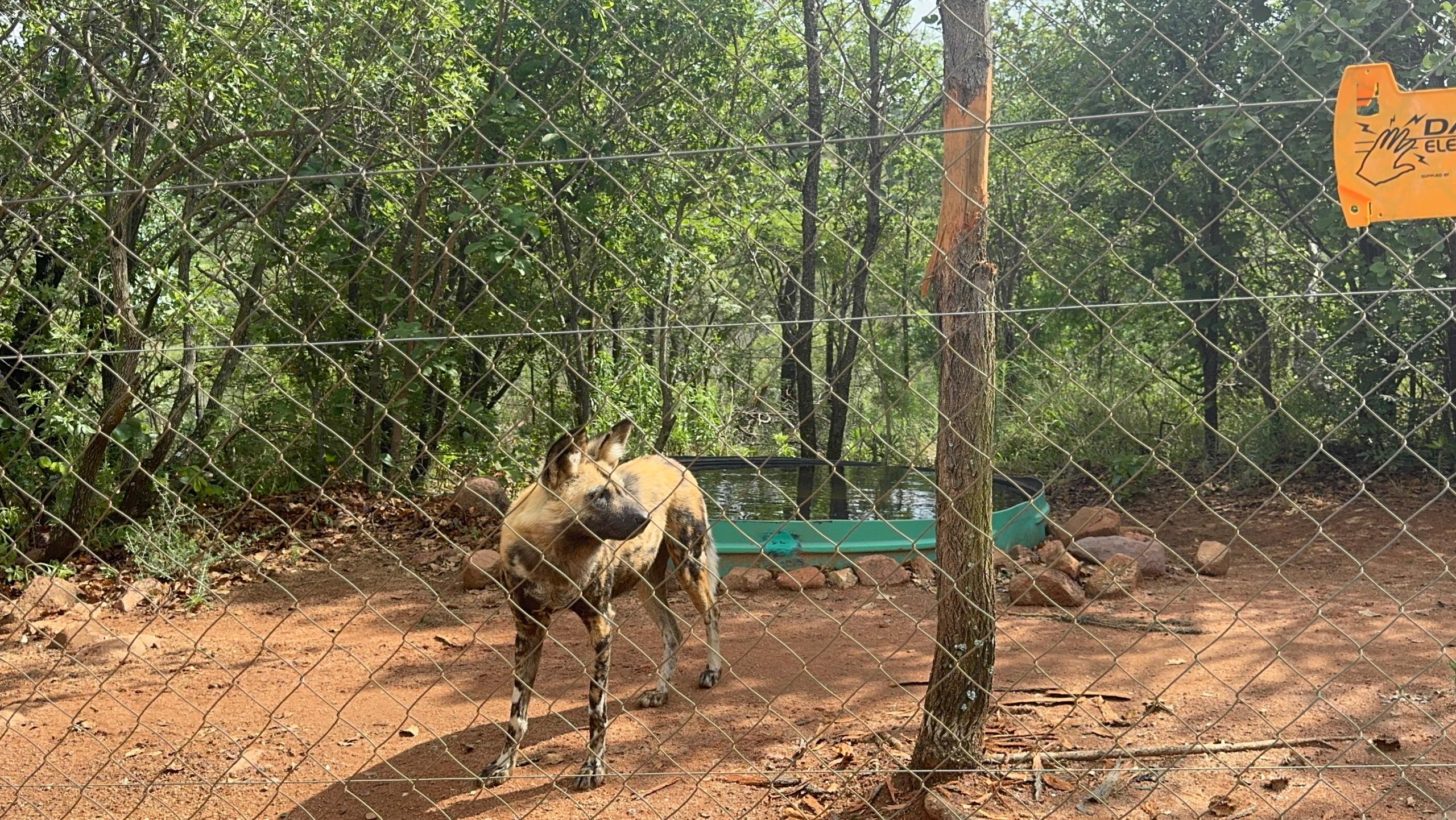BY SUE WATT
It was a long and arduous journey that finally brought Thuza and Kusasa home.
Two weeks ago, we had driven 500 miles through the night right across Zimbabwe, from Malilangwe in the southeast to Hwange in the northwest.
As our convoy approached its final destination, crowds lined the route, school children in pristine uniforms waved their flags, and local VIPs waited in safari Land Cruisers in the midday heat, all excited and eager to see their new neighbours.
Eventually, the two boys walked out of their crates and into their boma within the pioneering Imvelo Ngamo Wildlife Sanctuary, oblivious to the historic steps they were taking.
Not only were they the first white rhinos in the Hwange area for nearly 20 years, but they were the first in the entire country to live on communal land, with scouts from local villages trained to British military standards as their protectors.
Breaking new ground
Something of an unsung hero in conservation, Zimbabwe has the fourth highest rhino population in Africa, with more than 1,000 in national parks or private reserves.
But this small sanctuary measuring one mile square is breaking new ground as the pilot project of the Community Rhino Conservation Initiative (CRCI).
The CRCI is the dream child of Mark Butcher (known as Butch), MD of local operator Imvelo Safari Lodges and a former ranger in Hwange National Park.
“In the eighties, white rhinos were part of the scenery on the sand country of southern Hwange,” he said.
“The northern area still has a few black rhinos.
“But my heart has always been in the south and the grassy open plains, always involving white rhino.
“We lost them all because of poaching and Hwange has never been the same since.”
Benefits for all in one fell swoop
Butch’s plan is to gradually form a patchwork of mini-sanctuaries on current cattle-grazing pastures in the Tsholotsho communal lands around Hwange.
These would eventually become one conservancy with a viable breeding population of 30 to 50 rhinos roaming around 100 to 200 square miles along the southern border of the park.
The plan isn’t set in stone: it depends entirely on what local people want, but the benefits would be huge.
Crucially, the conservancy would act as a fenced buffer zone to benefit farmers who endure crop-raiding elephants and lions killing their livestock.
In one fell swoop, it will decrease human wildlife conflict, draw more visitors to Hwange to see the famous Big Five, and support local people through sanctuary entrance fees and employment.
Worth up to US$60,000 per kilo, rhino horn is erroneously believed to heal ailments ranging from cancers to hangovers, fuelling the illegal wildlife trade to Vietnam and China.
Having such vulnerable animals on communal land with the communities as custodians was initially deemed too high-risk, making it hard to raise donor funding.
An estimated $250,000 (just over £203,000) was needed for the sanctuary HQ and training camp with electric fencing, solar power, salaries for the 30 scouts of the new Cobras Community Wildlife Protection Unit, their unforms, rations, and top-of-the-range field equipment.
Butch took on a philanthropic soft loan to get the ball rolling, hoping donors would be more forthcoming in the future.
“This should have been a one-year project, but it took five years to move two rhinos from A to B,” he told me.
“Along with delays, there were naysayers and doubters, and countless bureaucratic obstacles.
“Imagine trying to import military firearms into Zimbabwe, the hoops we had to jump through…”
Butch emphasises the role of others in this complex initiative. Without stakeholders and local people onside, the project would never get off the ground.
He credits Njabulo Zondo, Imvelo’s director of community relations, and Sambulo Moyo, its communities projects officer, for “doing the donkey work” in liaising with government departments and communities.
A legacy for the people
Villages in the Tsholotsho area – particularly Ngamo, which lies closest to the park boundary – had already benefited from tourism at Imvelo’s four camps for several years, enjoying improved schools, access to boreholes and healthcare.
But asking them to invest in rhino conservation by giving up prime grazing land was new to everyone.
Baba Mlevu, the influential 89-year-old headman of Mlevu Ward, helped persuade local farmers.
“When I was small, I always used to see rhinos in Hwange,” he told me.
“And I want to see them again before I die. I want this to be my legacy for my people.”
The new rhinos will inevitably be prime targets for poachers, but Imvelo guide Vusa Ncube believes they will be protected in an area where 95 percent of locals support the project.
“The communities won’t let anyone take these rhinos from them,” he said, resolutely.
“And with all the security in place, it would be seriously difficult for poachers.”
That was the deal-breaker for the team at Malilangwe, from where the two bulls were translocated.
They wouldn’t move their precious animals without knowing they would be safe.
“These bulls will be guarded like the president,” Butch told me as we watched CRCI’s Cobra scouts, all from local villages, on a training drill for a breach of the boma fence.
High security
A piercing siren rang out as the team ran from their barracks, firearms in hand, magazines clicking hurriedly into place.
In just over one minute, their job was done, having checked inside the boma and all around its perimeter fence.
Their four years of rigorous training has clearly paid off under the leadership of Daniel Terblanche, ex-British Army with tours of Afghanistan and Iraq under his belt.
His second in command, Cedric Moyo, who had formerly trained at Malilangwe, comes from nearby Ziga village.
The rhinos will be protected by 24/7 close-quarters guarding.
“Within 100 metres of our rhinos, there will be six scouts at any point, night and day, rain, snow, whatever.
“Wherever they move, we will move,” Daniel explained. “We’ve been conducting a series of drills to iron out any issues using donkeys and pretending they are rhinos.
“Every night, I’ve tried to enter the boma to simulate poachers coming in. I couldn’t get within 80 metres of my target.”
The scouts themselves have a real sense of ownership towards the rhinos, and a rock-solid commitment to their protection.
“It’s fantastic that they’re finally here,” Wisdom Mdlongwa told me.
“These rhinos are for the whole community, and the Cobras will protect them.”
Bokani Mpofu was even more emphatic: “I would kill any poacher who tries to take my rhinos,” he said.
In January, Butch received the invitation he had been striving for: to present his ambitious plans for CRCI to the National Rhino Committee coordinated by Zimbabwe’s Parks and Wildlife Management Authority (ZimParks).
It was the final hurdle in this marathon conservation challenge, and with the full support of Malilangwe Wildlife Reserve, he was granted permission for the rhino movement permits.
Two special rhinos
Much of Zimbabwe’s success in rhino conservation is down to Malilangwe and its non-profit Malilangwe Trust, supported among others by the UK conservation organisation Tusk, the US-based African Community Conservation Foundation, and the high-end ecotourism company Singita.
The reserve welcomed its first translocated rhinos in the late 1990s.
Thanks to its ideal habitat, excellent security practices and extensive monitoring, Malilangwe has grown its population to the extent that it can now translocate rhinos to other appropriate destinations.
Having been captured by the dedicated rhino team two weeks earlier, Kusasa and Thuza, aged seven and eight respectively, were kept in a holding boma awaiting their translocation to Ngamo.
They had been carefully selected by ecologist Sarah Clegg, who records meticulous data on all individuals in the reserve.
She knew these two had been friends for years, and better still, were unrelated, an important factor for future breeding when females join the project.
“Being together will help them adjust to their new home,” she told me. “It’s rare for unrelated bulls to spend so much time together. They’re very special.”
With the rhinos sedated and loaded into crates on a 20-tonne truck, we finally set off in the convoy of Malilangwe’s experts, with ZimParks and police personnel.
There were multiple stops en route, with vets checking the rhinos’ temperatures, drugs, and positions in the crates.
Secretly, emotions and fears among the crew ran high but were kept in check by their calmness and professionalism.
“Every translocation is a potential catastrophe,” Sarah said.
Near a small town called Lupane two hours from Ngamo, the Cobras were waiting to take over security of their rhinos, with the flags of Zimbabwe, Tsholotsho and their own Cobras insignia flying high from their trucks.
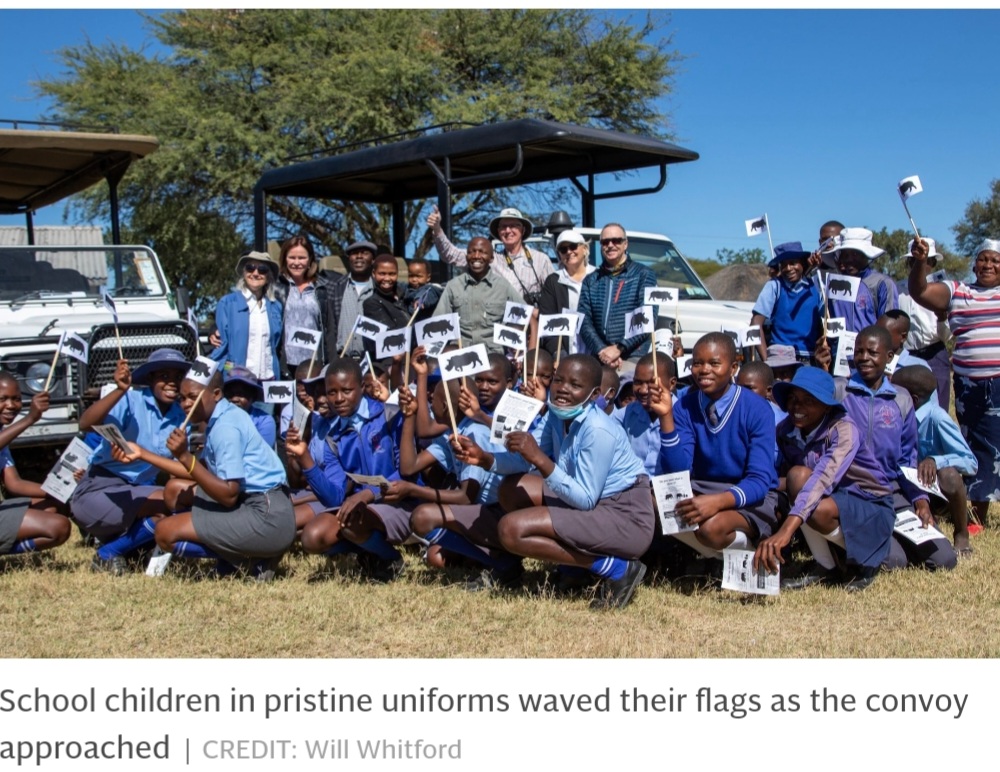
Guest visits to the sanctuary
Cars full of VIPs including Baba Mlevu joined the convoy as it progressed through Tsholotsho’s villages.
On reaching the sanctuary, the crates were lowered to ground level, and the rhinos eventually released.
Thuza, appropriately meaning “to charge” in Ndebele, rushed into the boma, relieved to be out of his crate, while Kusasa, meaning “tomorrow”, walked in quietly.
Every day since, the two bulls have stayed together and have been settling in well, closely watched by vets and scouts.
Soon, guests will be able to visit the sanctuary, spending time with the rhinos and Cobras.
Vusa is excited about that.
“Now I can take people from all over the world to see these beautiful animals on my own land, on the plains where I grew up herding cattle.
“That’s special,” he told me. “Our rhinos will change these villages forever.”
How to do it
The Luxury Safari Company (01666 880 111; theluxurysafaricompany.com) is offering a tailor-made trip from £5,221 per person, with one night at the Ilala Lodge in Victoria Falls and four nights at Imvelo Safaris Camelthorn Lodge all-inclusive, plus return rail car transfers on the Elephant Express, the new Rhino Sanctuary experience, and all safari activities.
Also included are two nights at Victoria Falls River Lodge and return flights with British Airways to Victoria Falls via Johannesburg. – The Telegraph
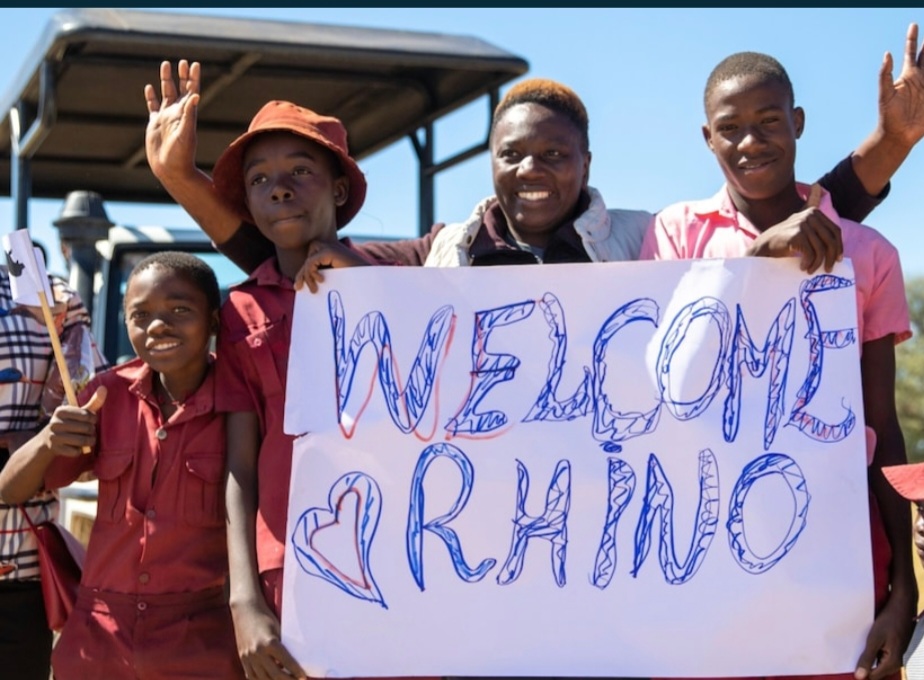

 Slider3 years ago
Slider3 years ago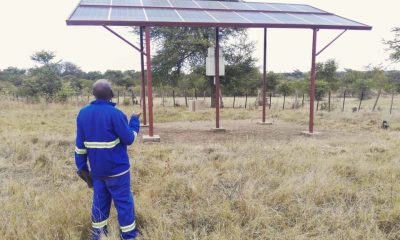
 National4 years ago
National4 years ago
 Tourism and Environment4 years ago
Tourism and Environment4 years ago
 Opinion4 years ago
Opinion4 years ago
 Special reports4 years ago
Special reports4 years ago
 National4 years ago
National4 years ago
 National3 years ago
National3 years ago
 National3 years ago
National3 years ago

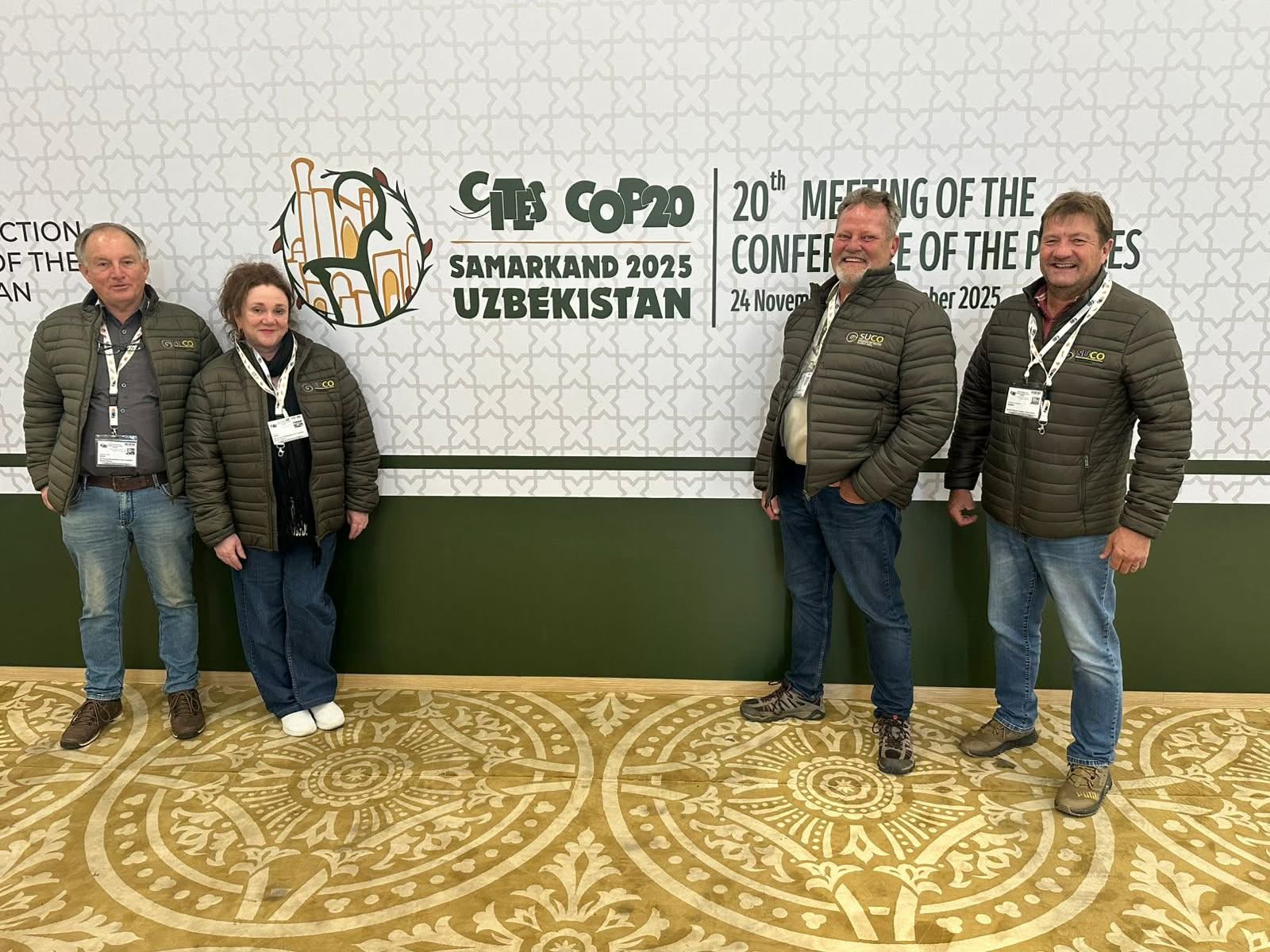
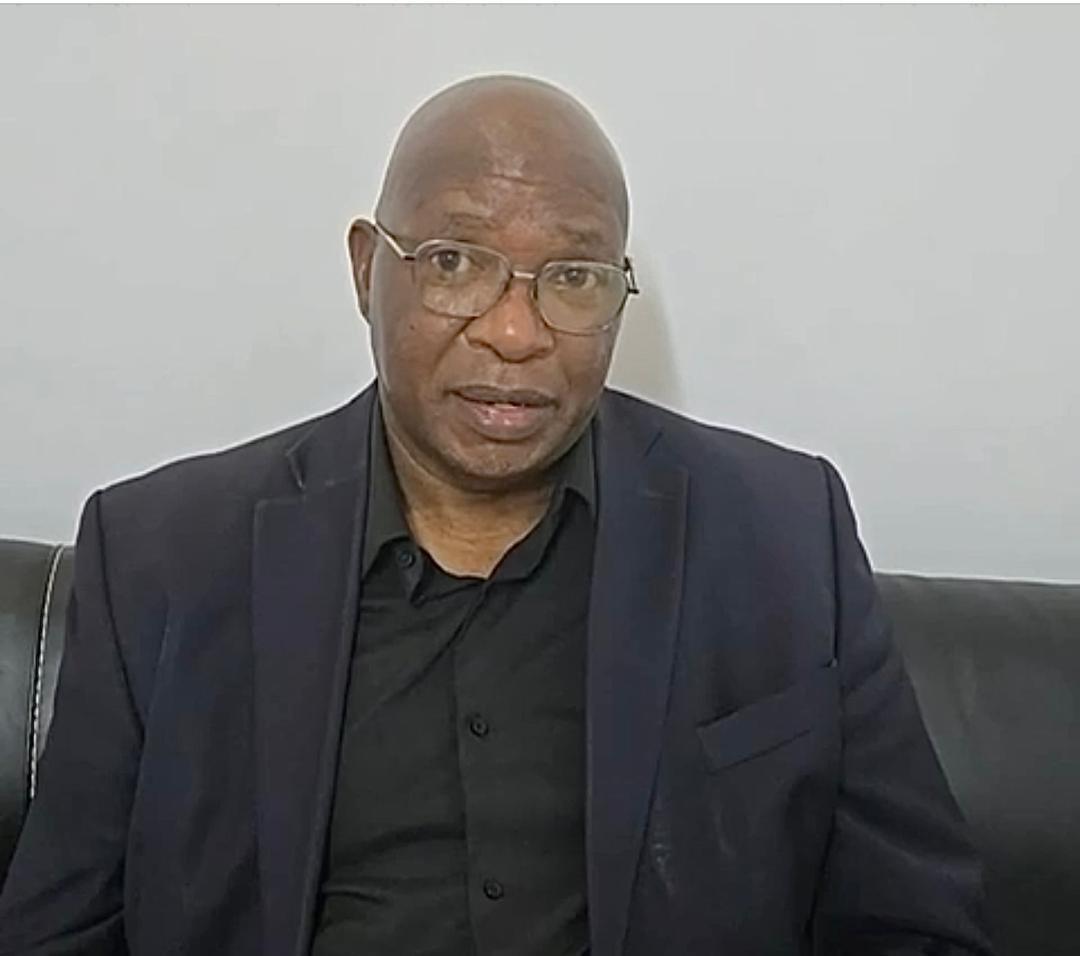
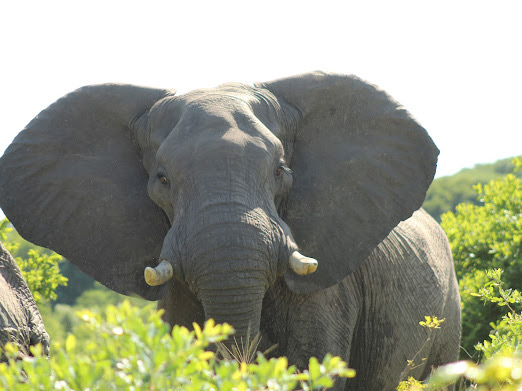 Key proposals Zimbabwe taking to CITES CoP20
Key proposals Zimbabwe taking to CITES CoP20

